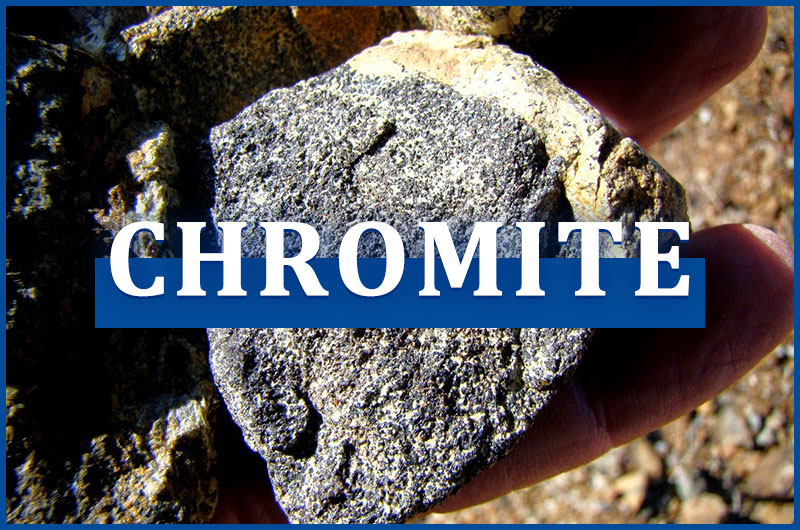King of Stainless Steel: Chromite
What is chromite?
Chromite is a mineral that is primarily composed of iron, magnesium, and chromium oxide. It is the main source of chromium. Chromium is an essential element for a wide variety of alloys, chemicals, and manufactured products. When chromite is extracted from the earth¡¯s mantle, it is referred to as chrome.

Mineral facts about chromite
-
Chemical formula: FeCr2O4
- Chromite color: Black to brownish black
- Chromite streak: Dark brown
- Chromite luster: Weak submetallic luster, often faint
- Chromite cleavage: No distinct cleavage
- Chromite fracture: Uneven
- Chromite specific gravity: 4.0 to 5.1 (variable)
- Chromite hardness: 5.5 to 6
What is the origin of the name chromite?
People are more accustomed to writing chromite ore as chrome ore. Have you ever noticed that Google Chrome has a similar name to chrome ore?
The name "chrome" is derived from the Greek word "chroma", which means "color". This is because chromium compounds are known for their brightly colored pigments, which have been used in dyes and paints for centuries.
Google used the same root word "Chrome" when naming their browser, which means using Google Chrome to experience the colorfulness of the Internet.
Where is chromite found?
Chromite ore is found in basic and ultrabasic igneous rocks such as peridotite, serpentinite, and olivinite. It is also found in beach sands when chromite-bearing rocks are altered by heat or weathering.
Podiform chromite deposits
Podiform chromite deposits are typically found in layered igneous rocks and are characterized by the presence of pod-like structures. Chromite resources from podiform deposits are mainly found in Kazakhstan, Turkey, and Albania.
Stratiform chromite deposits
Stratiform deposits, in layered intrusions, are the main source of chromite resources and are found in South Africa, Canada, Finland, and Madagascar. Stratiform deposits are formed as large sheet-like bodies, usually formed in layered mafic to ultramafic igneous complexes. This type of deposit is used to obtain 98% of the worldwide chromite reserves.
The world¡¯s largest stratiform chromite deposits are found in South Africa, in what is known as the Bushveld complex.
Beach sands
Chromite is also found in beach sands derived from the weathering of chromite-bearing rocks and laterite soils that developed over peridotite. Placer chromite deposits are located along the world coastline. For example, you can find placer chromite in south Maharashtra, central west coast of India.
What are the uses of chromite?
Chromite is the main source of chromium (chrome). Chromium has unique qualities that make it ideal for a variety of applications. It plays an important role in our daily life and makes a significant contribution to a sustainable society.
1. Stainless steel
Stainless steel accounts for approximately 80% of chromite use. Therefore, chromite is also known as the king of stainless steel.

